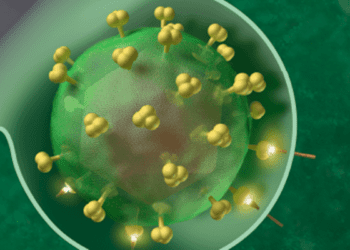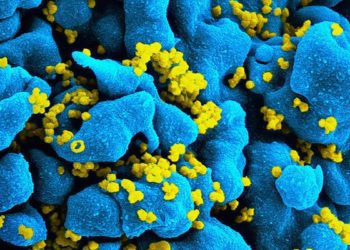Higher smoking rates in adult HIV population
1. From a cross-sectional survey, adults with HIV were associated with an increased likelihood of smoking than the general population.
2. Adults with HIV who smoke were also less likely to quit.
Evidence Rating Level: 2 (Good)
Study Rundown: Smoking is associated with both negative health effects and a high level of economic cost. Additionally, the rates of smoking-associated illness are increased in patients with HIV, and smoking may synergistically increase mortality and decrease the efficacy of treatment. To better characterize smoking practices and prevalence in adults with HIV, this cross-sectional survey found that adults with HIV were twice as likely to be current cigarette smokers, and adults with HIV were also less likely to quit. The study also linked smoking to well-known contributors, such as age, race, education, poverty, substance abuse, as well as factors of particular relevance to HIV such as depression and unsuccessful viral load suppression. Limitations to the study include the narrowness of the survey population (i.e., non-institutionalized adults with HIV currently receiving care), differences between comparison populations that required adjustment, and possible sampling biases (i.e., population overlap, geographic representation). Overall, smoking remains an important medical concern, potentially even more substantially for adults with HIV.
Click to read the study, published today in the Annals of Internal Medicine
Relevant Reading: Mortality attributable to smoking among HIV-1-infected individuals: A nationwide, population-based cohort study
In-Depth [cross-sectional study]: Cross-sectional analysis was performed using the Medical Monitoring Program (MMP) and National Health Interview Survey (NHIS) to estimate prevalence for adults with HIV and adults in the general U.S. population, respectively. From the MMP, 4,207 records were adequate for study inclusion, and the NHIS data was available for a final sample of 27,603 participants. Prevalence differences were calculated from a multivariate logistic model that included factors associated with smoking, which was defined as a cumulative use of 100 or more cigarettes. In the population of adults with HIV, 42.4% (95%CI 39.7% to 45.1%) were current smokers, 20.3% (95%CI 18.6% to 22.1%) were former smokers, and 37.3% (95%CI 34.9% to 39.6%) never smoked. Among adults representative of the U.S. population, 20.6% (95%CI 19/9% to 21.3%) were current smokers, 21.9% (95%CI 21.2% to 22.7%) were former smokers, and 57.5% (95%CI 56.6% to 58.4%) never smoked. Quit ratios (i.e., ratio of former smokers to ever smokers) were calculated at 32.4% (95%CI 29.6% to 35.2%) for adults with HIV and 51.7% (95%CI 50.3% to 53.0%) for adults in the general population. The sample of adults with HIV differed substantially from the U.S. general adult population in terms of age, sex, race/ethnicity, education, and poverty level.
Image: PD
©2015 2 Minute Medicine, Inc. All rights reserved. No works may be reproduced without expressed written consent from 2 Minute Medicine, Inc. Inquire about licensing here. No article should be construed as medical advice and is not intended as such by the authors or by 2 Minute Medicine, Inc.







